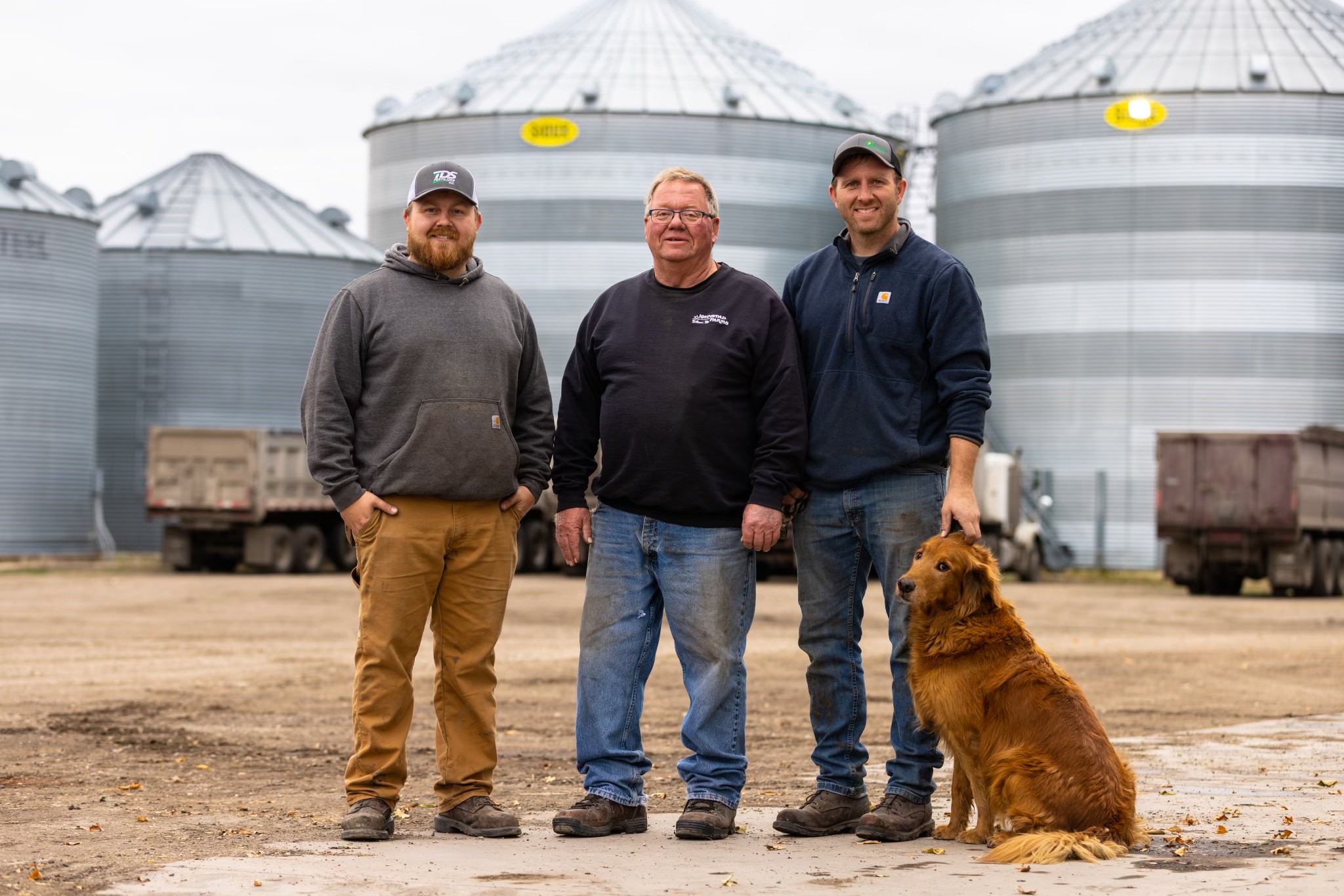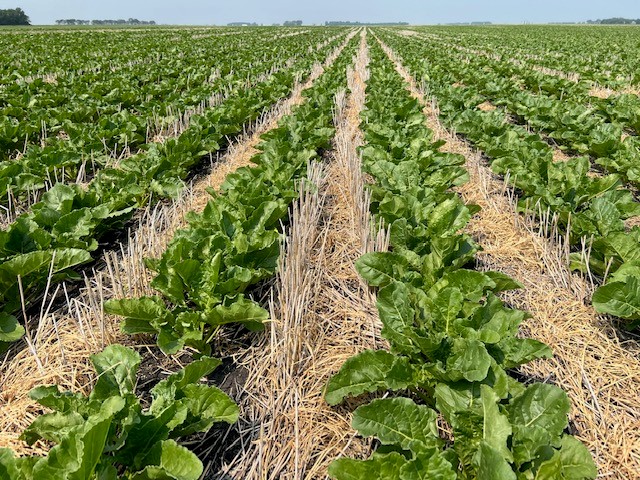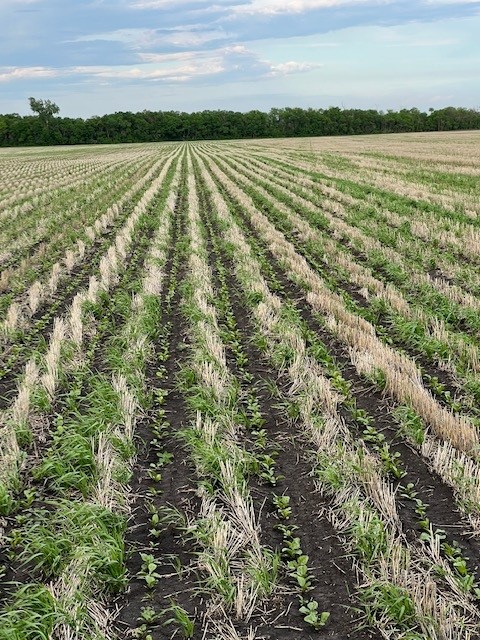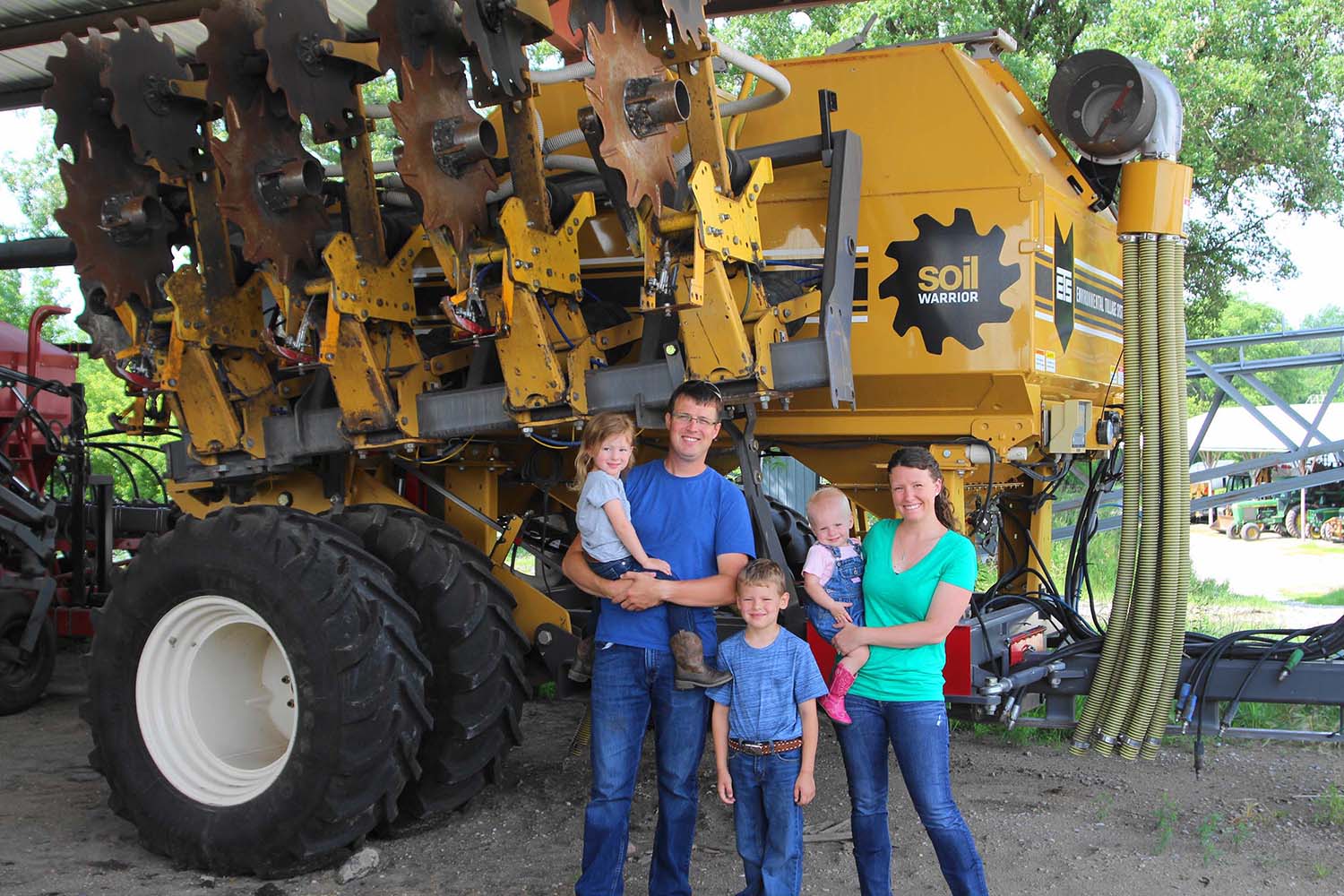Effective beginning 5/20/2025: Please note this site is under review and content may change.
Andrew Johnstad’s family has farmed in Minnesota since his grandfather immigrated to the United States from Norway in 1905.
Johnstad, a fourth-generation farmer in Beltrami, Minnesota, farms 11,000 acres of corn, soybeans and sugar beets along with his dad, David, and brother, James. They pride themselves on employing locals and being an economic driver in their small town of 80 people, but in recent years, changing weather patterns have made that mission more difficult.

The winds have gotten stronger, and the rain has gotten less predictable. Then, it all came to a head three years ago when poorly timed “hellacious winds” came through, devastated their sugar beet crop and convinced them it was time to take a leap of faith and adapt the way they farm.
As an early adopter of cover crops, they’d built resiliency in the field for just that scenario by planting cover crops on their beet fields. Time was just not on their side and —10 days after they terminated their cover crops — the winds they were trying to protect against arrived with nothing left to protect their crop.
“It just about cut the yield in half because the dirt blew and cut off all the beet plants,” Johnstad said. “That was kind of the last straw for us for like, 'Alright, there's got to be a better way, right?'”
A Leap of Faith
Their search for a better way led them to transition their beet fields from conventional tillage to strip-tillage. Strip tillage (strip-till) creates a narrow band of tilled soil, while leaving the remainder of the field undisturbed. This undisturbed soil reduces soil erosion, increases pore space development through the soil profile and generally increases the overall soil health. The alternating rows of cash crop and cover crop creates permanent wind protection throughout the entire season, instead of leaving the cash crop unprotected following cover crop termination in a conventional tillage system. Strip-till also provides ancillary soil health benefits through better water infiltration, reduced fertilizer usage and reduced erosion from both wind and water.
“Basically, now that we do strip-till, we're pretty much guaranteeing that our beets won't blow out from wind,” Johnstad said. “We believe that. We're seeing that. We're excited about that.”

While the first three years of results have been positive, the change was not without initial and ongoing risks. The Johnstads had minimal built in examples of it being successful, with no other farmers in their immediate area having adopted the practice, and there was the cost associated with changing their equipment.
“Taking that leap of faith, I mean my stomach was upside down for two years to really hope that I didn't give up too much by going to strip-till,” Johnstad said.
Building Public and Private Partnerships
In order to minimize the risk and provide at least some guaranteed income while making the switch, Johnstad decided in June 2022 to partner with the Soil and Water Outcomes Fund (SWOF), a subsidiary of the Iowa Soybean Association that provides financial assistance to farmers who adopt climate-smart agricultural practices such as strip-till.
Through the Midwest Climate-Smart Commodity Program, a U.S. Department of Agriculture (USDA) Partnerships for Climate-Smart Commodities project, Iowa Soybean Association is working with public and private partners such as the USDA, PepsiCo, Cargill, Coca-Cola and more to provide financial and technical assistance to farmers, like the Johnstads, in 12 midwestern states.
The program started in 2019 and works by providing a per-acre payment to farmers in return for them adopting climate-smart practices such as reduced or no-till practices, cover crops, crop rotation or nutrient management systems. The goal of the program is to reduce greenhouse gas emissions, improve water quality and create markets for commodities grown using climate-smart practices.
Even in these early stages of the program, farmers are seeing positive climate impacts. Johnstad said by using strip-till he has reduced his field passes and fertilizer usage. He estimated they have reduced their nitrogen and phosphorus inputs by 20% and that fuel consumption is down 35%.

As opposed to an environmental offset program, the work being done with the Midwest Climate-Smart Commodity Program leverages an inset program where partners are providing direct assistance to producers in areas where they source commodities such as the corn, soybeans and sugar beets they use in production of their products.
“We work with our partners to understand the commodities they use and where those commodities are sourced — corn from Illinois, for example,” said Adam Kiel, managing director of SWOF. “We would go enroll farmers into our program that produce corn in that area of Illinois and that level of connection between the farmer that produces the crop and partners utilizing that crop is how we build environmental resiliency into farms while also reducing the environmental impact of the supply chain.”
Farmers must adopt or expand one of the approved practices in the year they enroll in the program. They can receive payments in subsequent years by continuing the practice and increase their payment by adopting additional practices.
Partnerships for Climate-Smart Commodities
While SWOF has been around for five years, it was able to massively expand in 2023 after being selected for USDA’s Partnerships for Climate-Smart Commodities opportunity. USDA will provide $95 million over the next five-years to Iowa Soybean Association’s Midwest Climate-Smart Commodity Program. In just the first year of investment through the project, Kiel said they were able to double the acres they have enrolled, and they now have more than 300,000 acres enrolled in climate-smart practices through the program. The long-term goal of the program is to reach an annual enrollment of 1 million acres and more than 1,000 Midwest farmers in new climate-smart practices.
Overall, Partnerships for Climate-Smart Commodities is investing $3.1 billion across 141 projects nationwide to support America’s farmers, ranchers and forest-land owners as they adopt climate-smart agricultural practices.
“(The grant has) really given us some certainty to move forward with not only farmers but with expanding our program and growing our reach across the Midwest,” Kiel said. “That's really helped solidify the opportunity for farmers.”
Adapting to Changing Weather
The program’s expansion has also enabled them to help farmers such as Bryan Biegler, who farms 2,500 acres of corn and soybeans in southwest Minnesota. Much like Johnstad, Biegler has noticed in recent years that changing weather patterns are impacting the way he farms. Rain that used to fall slowly throughout the day now comes in short, torrential downpours creating erosion problems throughout his farm. Wind events have also become more frequent and heavier leading to increased wind erosion.
After enrolling with the Midwest Climate-Smart Commodity Program in August, Biegler put the financial assistance to good use and made the jump from 100 acres of cover crops in 2022, to covering all 2,500 acres in 2023. He has also adopted strip-till practices throughout his farm and is looking to take the practice even further by adopting vertical tillage, which is a similar practice with less disturbance within the planted rows. Biegler was concerned about the costs of trying something new, which is where the assistance has been helpful.
“If it doesn't work, it’s about like driving down the road, sticking your hand with a bunch of money out the window and just letting it float away," Biegler said. “Being able to do this and help recover a little bit of that cost while you're trying to figure out how this all works, that definitely eases it up a little bit.”
The grant has also enabled the Midwest Climate-Smart Commodity Program to solidify multi-year relationships with farmers. For example, Nick Hermanson, who farms 5,000 acres of corn and soybeans and raises 300,000 turkeys a year on his farm in Story City, Iowa, is a fifth-generation farmer on the same land his family has farmed for 150 years.

He initially enrolled with SWOF in 2021 to help introduce strip-tillage on his farm and expand his use of cover crops. They now strip-till about 95% of their acres annually and this year planted cover crops on 3,000 acres.
The biggest thing the financial assistance from the Midwest Climate-Smart Commodity Program has helped with, Hermanson said, is offsetting the operational expenses of the practices, such as purchasing cover crop seeds and paying for the manpower to plant them. They have also been able to invest those funds into improving the process of climate-smart practice implementation, including into equipment.

The adoption of cover crops and strip-till have led to better water infiltration, reduced erosion, and a reduction in the runoff of excess nutrients in their subsurface drainage, Hermanson said. The changes are most evident in the winter, he said, when snow filling the ditches alongside a neighboring farm is dyed black by the soil running and blowing off the fields. That contrasts with his farm where, “there'll be a little bit of black here and there but it's definitely noticeable reduction compared to the conventional tillage.”
Hermanson has also benefited from the water and soil testing provided under the Midwest Climate-Smart Commodity Program, which has shown him a reduction in excess nitrogen flowing off his farm and into waterways.
Overall, Johnstad, Biegler and Hermanson said the assistance through SWOF has enabled them to make changes on their farm they likely could not have afforded to do on their own or would have been willing to risk financially. It is hard to convince your partners to change how they have operated for generations, Johnstad said, but the weather patterns have forced their hand. The help with applying climate-smart practices has enabled them to take on the risk because there is some guaranteed income on each enrolled acre.
“You don't want to be wrong. It's the business we're running so you've got to pay your land rent at the end of the day. You've got to pay your beet rent at the end of the day. So, the risk of being wrong is real,” Johnstad said. “I don't think we would have been 100% strip-till if we didn't have the help because I don't think we could afford the risk.”
Brandon O’Connor is a public affairs specialist with USDA’s Farm Production and Conservation Business Center. He can be reached at brandon.oconnor@usda.gov.


